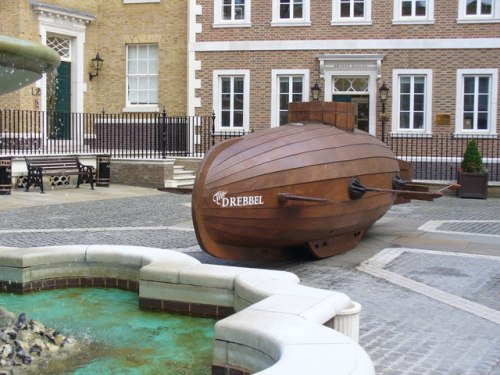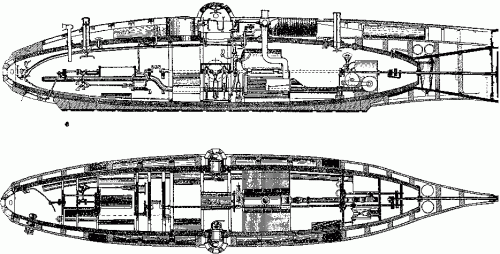After the loss of the American Revolutionary War submarine in 1776 the Americans did not produce another memorable submarine until the American Civil War. But there were still men around the world designing and building submarines, including some men in the United States. However, only a handful of the submarine builders could interest any government in their work.
One of the few who did was Robert Fulton, American inventor. Fulton designed and built the first commercially successful steamboat, the Clermont, which provided passenger service between Albany and New York City. Twenty years after the Turtle, Fulton designed a submarine. In 1800, he was in France trying to interest the French government in his submarine for use against the British. The British and French were at war with each other again.
The Nautilus was about 21 feet long with a beam of about 6 feet. It was made of an iron frame with a copper skin. The iron keel was hollow to take on water ballast so the Nautilus could dive. It had a four-bladed propeller hand cranked by two men and a sail for surfaced propulsion. The third man navigated the submarine and attached the bomb to the underside of the target ship.
The Directory of the French First Republic was uninterested in Fulton’s plans, but the Minister of Marine authorized the construction. Fulton obtained an interview with Napoleon, but could not gain his support. Next, he put on a demonstration where the Nautilus destroyed a 40 foot sloop. The panel from the Minister of Marine was impressed and recommended two submarines be built. In the end Napoleon was unconvinced and the French navy considered the submarine a suicide weapon.
The British knew of the failed mission to France and paid Fulton ₤800 to build a submarine for Britain. If Fulton was building a submarine for the British he would be unable to build one for France – if they changed their mind. The British ignored Fulton while he was in Britain and he returned to the United States in frustration. Thirty years later another submarine designer and builder named his first submarine after the Nautilus.
Even as Fulton faced failure, around the world men continued their work. They dreamed, planned, and researched, and then they would build. They would study any information they could find on previous submarines, sometimes incorporating design features or improving a design feature from a previous submarine. These men were stepping into a field where much was still unknown. Sometimes these pioneers paid the ultimate price to push the envelope in their search for a viable submarine, and sometimes they only went bankrupt. A few though, would see their creations purchase by governments and used (though normally unsuccessfully).









